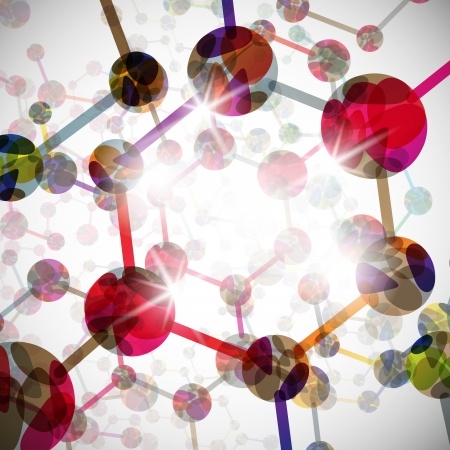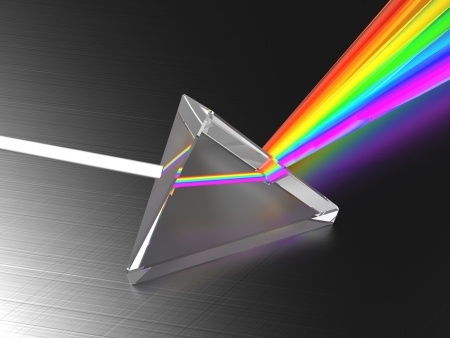B-12 Pops Pimples, four-legged fish, monkey brains, regenerate like a starfish, gravity kills a famous cat and so much more… This eclectic collection of current science news stories is brought to you by STAOBlog.
SciNews is published every Monday and Thursday. Stay tuned for more.
 Biology
Biology
How vitamin B12 makes pimples pop up. Science New
Vitamin B12 causes a normal skin bacteria to produce pimple-promoting chemicals.
Both people with clear skin and those with acne have Propionibacterium acnes living on their skin. But bacteria from acne sufferers have a different metabolism than microbes from the pimple-free, researchers report June 24 in Science Translational Medicine. Microbes from the acne-ridden have 109 genes that are more active than normal and 27 that are less active. Taking vitamin B12 can cause similar changes in these bacteria, the researchers found. Read more …
The Million Monkey Effect in the Brain. Discover
The ‘million monkey’ scenario is a well-known thought experiment. Supposing a million monkeys were randomly tapping at the keys of a typewriter. Would one of the monkeys eventually happen to type out the text of a Shakespeare play?
Over any realistic time scale, it turns out that the probability of them reproducing even one page of Shakespeare is rather small, although given an infinite amount of time (or infinite monkeys), the monkeys would succeed an infinite number of times. Read more …
Starfish Ruin an Experiment and Reveal a Superpower. Discover
cientists already knew starfish have superpowers. They can regenerate entire lost limbs or organs; some can even regrow a whole body from one arm. And these animals have just revealed another bizarre ability. To two Danish students, it first appeared as the power to really wreck an experiment.
At the University of Southern Denmark, students Frederik Ekholm Gaardsted Christensen and Trine Bottos Olsen were asked to tag some starfish. The task was simple: inject the Asterias rubens with microchips, the same kind that veterinarians implant in pet dogs. This would let researchers easily identify individual starfish later on. The technique had already been used successfully in sea urchins. Read more …
Fossils of four-legged fish found in Arctic back in Canada and on display. Globe and Mail
A 375-million-year-old fossil of a primitive fish that also sports features of the first four-limbed creatures is now in the hands of the Canadian Museum of Nature, the museum announced Tuesday. The transitional fossil, known as Tiktaalik, has a flat head and a neck like tetrapods but also has fins, scales and gills like fish. Its discovery is said to have dramatically advanced our understanding of the evolution of finned to limbed animals. Read more …
Chemistry

Rubber Chicken Bone Science Experiment. About Chemistry
You won’t be able to make a wish on a wishbone with the rubber chicken bone science experiment! In this experiment, you use vinegar to remove the calcium in chicken bones to make them rubbery. This is a simple project that illustrates what would happen to your own bones if the calcium in them is used more quickly than it is replaced. Read more …
Sense of smell is strictly personal, study suggests. Science News
A person’s sense of smell may reveal a lot about his or her identity. A new test can distinguish individuals based upon their perception of odors, possibly reflecting a person’s genetic makeup, scientists report online June 22 in Proceedings of the National Academy of Sciences. Most humans perceive a given odor similarly. But the genes for the molecular machinery that humans use to detect scents are about 30 percent different in any two people, says neuroscientist Noam Sobel of the Weizmann Institute of Science in Rehovot, Israel. This variation means that nearly every person’s sense of smell is subtly different. Nobody had ever developed a way to test this sensory uniqueness, Sobel says. Read more …
Physics
3-D heart printed using multiple imaging techniques. Science Daily
Congenital heart experts have successfully integrated two common imaging techniques to produce a three-dimensional anatomic model of a patient’s heart. This is the first time the integration of computed tomography (CT) and three-dimensional transesophageal echocardiography (3DTEE) has been used in this way. A proof-of-concept study also opens the way for these techniques to be used in combination with a third tool — magnetic resonance imaging (MRI). Read more …
Gravity Kills Schrödinger’s Cat. Scientific American
If the cat in Erwin Schrödinger’s famous thought-experiment behaved according to quantum theory, it would be able to exist in multiple states at once: both dead and alive. Physicists’ common explanation for why we don’t see such quantum superpositions—in cats or any other aspect of the everyday world—is interference from the environment. As soon as a quantum object interacts with a stray particle or a passing field, it picks just one state, collapsing into our classical, everyday view. Read more …
How understanding GPS can help you hit a curveball. Science Daily
Our brains track moving objects by applying one of the algorithms your phone’s GPS uses, according to researchers. This same algorithm also explains why we are fooled by several motion-related optical illusions, including the sudden ‘break’ of baseball’s well known ‘curveball illusion.’ Read more …
Earth and Space Science
Pacific hurricanes to strengthen as Earth warms. Science News for Students
In tropical regions around the world, huge storms form over warm ocean waters. These swirling monstrosities have different names. In the Atlantic, they’re known as hurricanes. In the Pacific, they’re called typhoons or tropical cyclones. These storms can cause massive damage when they travel over land. New research now predicts that typhoons in the Pacific will become even more destructive. That will happen because ocean waters are warming. Read more …
Solving Saturn’s 2-billion-year age problem. Science Daily
Experiments at Sandia’s Z machine have provided data may help explain why Saturn is two billion years younger than Jupiter on some computer simulations, supporting a prediction first made in 1935. Read more …



